#Vegetable Satay
Text
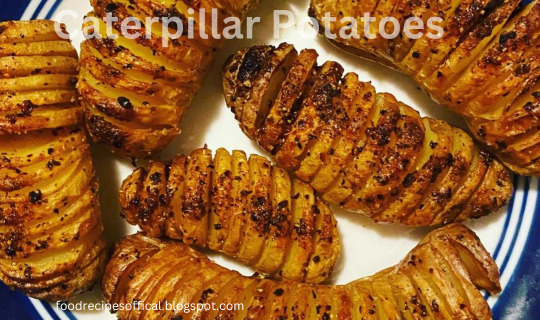
Caterpillar Potatoes. Traditionally, wheat cultivation in India is mainly done in the northern parts. Wheat is produced in abundance in the plains of Punjab and Haryana, states of India. Vitamin C. Read full Recipe https://foodrecipesoffical.blogspot.com/2023/07/327-food-recipes-caterpillar-potatoes.html… http://foodrecipesoffical.blogspot.com
#Noodles Salad#Chicken Pasta#Mexican Macaroni#Rasam Rice#Vegetable Satay#Mushroom and Spring Onion Kulcha#Paneer with French Beans#Navratan Kurma#Aloo Lachha
0 notes
Photo
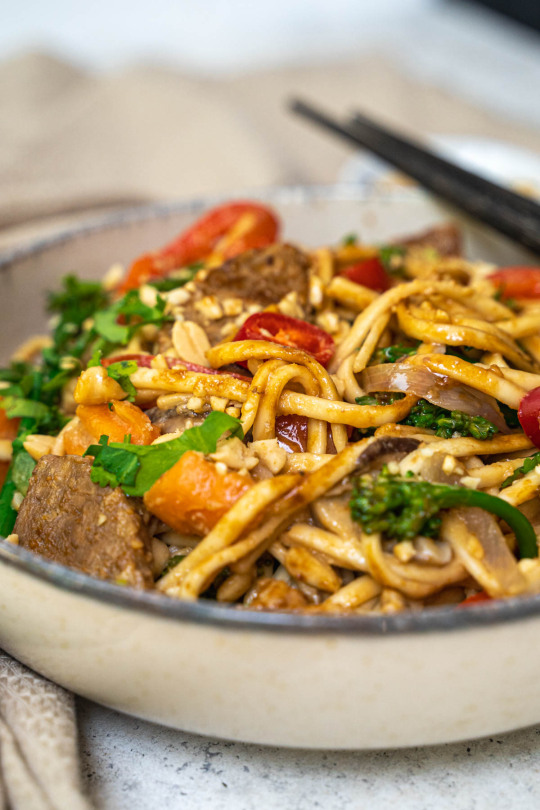
Vegan Satay Noodles
64 notes
·
View notes
Text
When fic writers add in cultural foods from the places the nations r based of i get SO EXCITED!!!! like YES PLEASE tell me MORE!!! Im putting my hands over the faces of people who insist that the food needs to be made up to match w ATLA canon im shoving my fists into their mouths they can have a knuckle sandwich instead.
#ATLA#ITS SO GOOD IDK WHY BUT I ABSOLUTELY LOVE IT#LIKE TELL ME MORE ABOUT THIS!!#AND ITS NEVER THE LIKE SUPER WELL KNOWN FOODS ITS ALWAYS SOMETHING SUPER SPECIFIC TO REGIONS AND I LOVE IT#Its even better when they take a real food but make the protein or vegetable something mentioned in ATLA#LIKE YES!!! I LOVE SOME KOALA-SHEEP SATAY!#GIVE ME MORE!!!!!!!!! MORE!
0 notes
Text

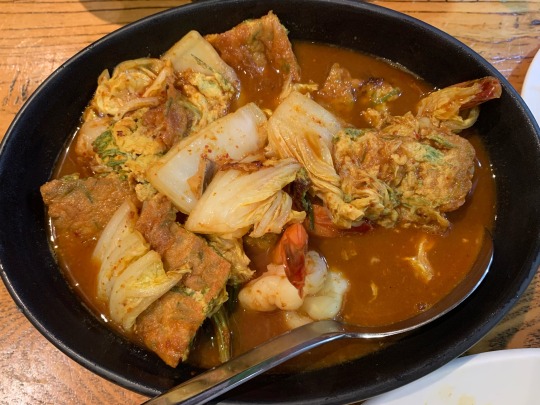
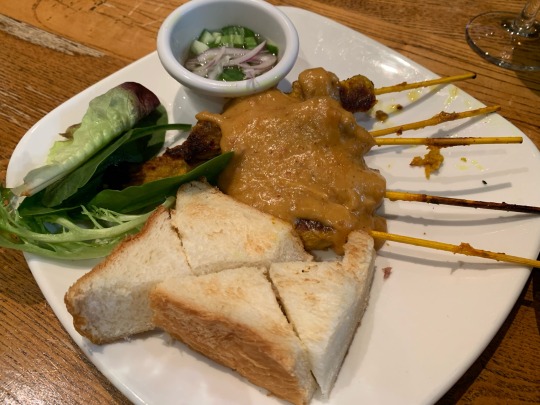
1. Crabmeat Curry with Fermented Rice Noodle
2. Climbing Wattle Omelette in Sour Soup
3. Pork Satay with peanuts sauce
#bangkok#food#salad#satay#pork satay#soup#sour soup#omelette#noodle#thai food#vegetable#yummy#seafood#food photo blog
0 notes
Text
"No man dipping his satay in peanut sauce in Bangkok, or woman eating chicken paprikash in Budapest, or any number of families consuming potatoes across the breadth of Russia, stops for one moment to consider how relatively recently these seminal ingredients have been added to their national cuisines,
We apply the terms “invasive” and “native” to the vegetable kingdom. They are full of resonance for us, but every day, at our dining tables, we set aside our obsession with origins — what is ours, what has come from outside — nourishing ourselves on an endlessly fertile encounter with the other."-tracing Mexico’s Complicated Relationship With Rice, Aatish Taseer, New york times
542 notes
·
View notes
Text
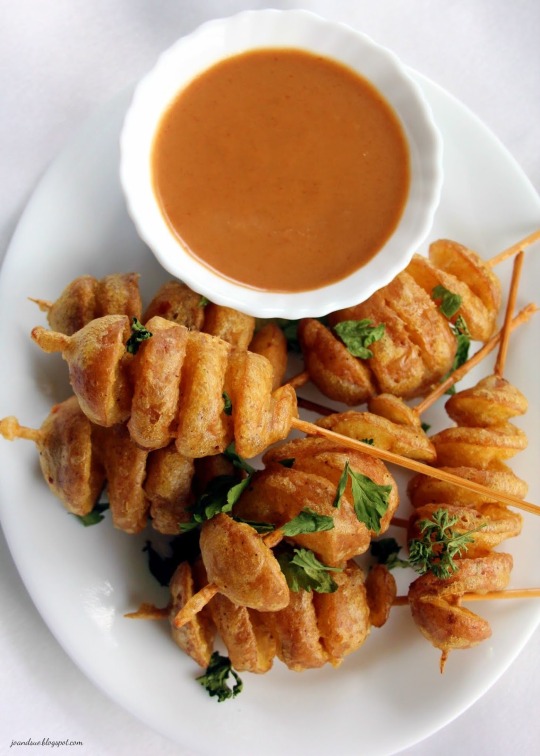



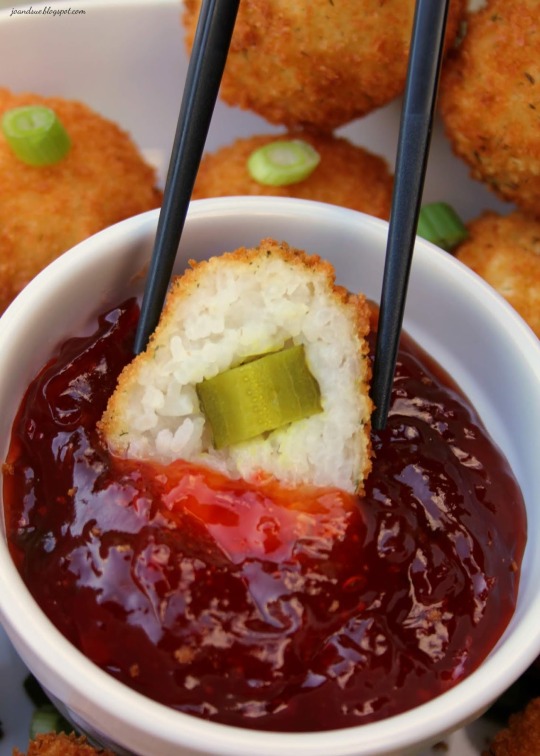
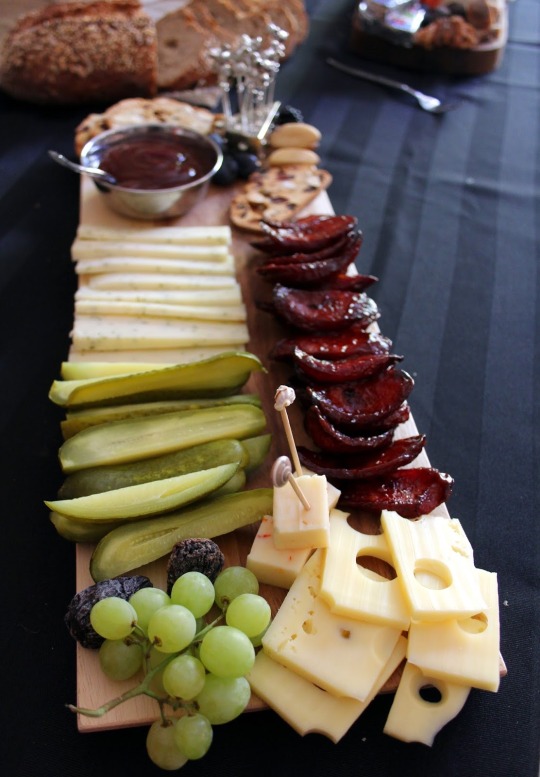

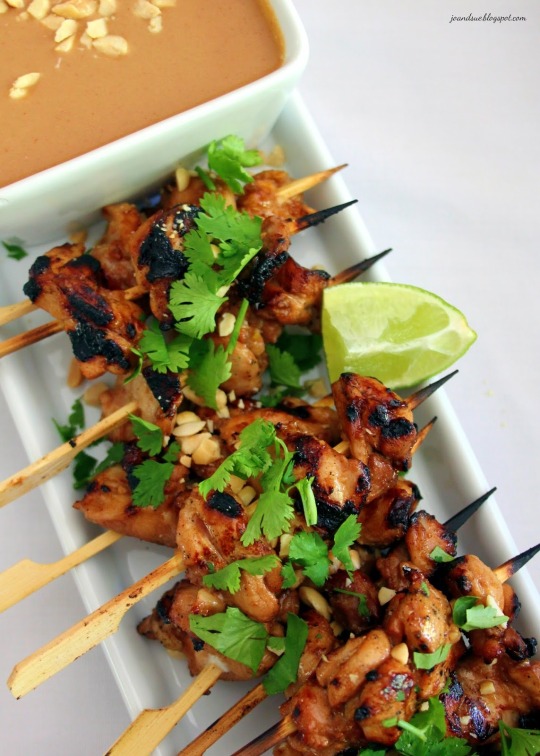

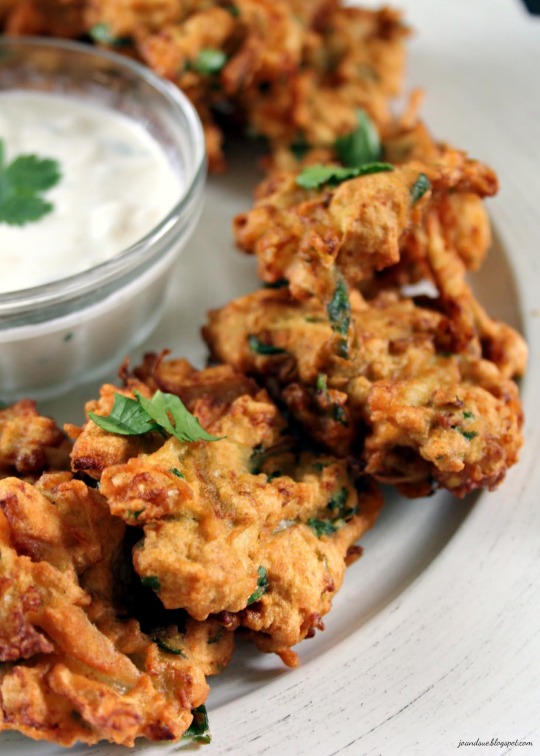
Ten Appetizers To Start Your Party Off Right
Mini tornado potatoes with peanut sauce, Jalapeno cream cheese stuffed apricots wrapped in bacon, spinach dip bread board, samosa roll ups, crispy pickle rice balls with spicy red pepper jelly, BBQ sausage charcuterie board, yam Mochi with sticky gochujang garlic sauce, Thai chicken satay with peanut sauce, savory donut sushi fries with spicy mayo and tonkatsu sauce, and vegetable pakoras.
12 notes
·
View notes
Text
In January, Taipei-based food writer Liz Kao thought she had scored a coveted invitation to the inauguration banquet for Taiwan’s president-elect, Lai Ching-te, on May 20. She was flattered when one of the organizers asked if she wanted to attend. But when she hopped on a clarifying call with him in March, she realized there was more to it.
“He told me I was going to make the menu. I was shocked,” Kao said.
Suddenly, Kao, a lawyer-turned-food influencer, found herself in charge of designing a state banquet for more than 1,000 guests. She put together a task team composed of veteran food writer Jewel Tsai—“who is very experienced in sourcing ingredients,” Kao said—and two critically acclaimed Taipei chefs: Wes Kuo of Embers, who has an encyclopedic “knowledge of herbs and plants in Taiwan,” and Tsai Jui-lang of Mountain and Sea House, who specializes in traditional 20th-century banquet fare. “He has the technique,” Kao said.
In less than 36 hours, the group had sketched out a preliminary eight-course meal. Their strategy was to concoct dishes and flavor profiles that would represent Taiwan’s five main ethnic subgroups: Indigenous, Hoklo, Hakka, Chinese mainlanders, and Southeast Asians. “We wanted to tell the story of Taiwan’s multiculturalism and democracy,” Jewel Tsai said.
This story is central to Lai’s platform. His Democratic Progressive Party (DPP) is the first political party in Taiwan’s history to secure three consecutive terms, and Lai has styled himself as an extension of his predecessor, Tsai Ing-wen, who maintains that Taiwan is already a sovereign, independent country and does not need to declare independence. The party asserts the island’s autonomy in part by embracing its vibrant mix of cultural identities, and this year’s banquet menu is an expansion of that ethos.
At first glance, Taiwan may not look like a very diverse society, since 95 percent of its inhabitants are ethnically Han Chinese. But that’s a huge and broad term for a multitude of peoples. In addition to its Indigenous residents, who make up about 2 percent of the island’s population, Taiwan has a 400-year history of immigration, and each wave has brought new food customs, condiments, and dishes to the island.
Seventy percent of residents have Hoklo ancestry, descending from the initial wave of migrants from China’s Fujian province who started settling on the island’s west coast in the 17th century. Hakka, a migratory group from southern China, also arrived during this period and comprise about 15 percent of the population.
Another 10 to 15 percent is represented by Chinese mainlanders, who fled with the Republic of China’s government to Taiwan during the Chinese Civil War in the mid-20th century. Southeast Asians, the most recent immigrant group, began arriving in large numbers in the 1990s and now account for 2 percent of Taiwan’s population.
“Taiwanese cuisine is the combination of all these groups of people. It’s a sum of all the cultures,” Kao said.
As Kao’s team prepared the menu, they narrowed in on ingredients unique to each of these cultures. For the first course, for example, they opted for an array of seasonal vegetables, including Makino bamboo, chayote squash shoots, and lily bulbs, plated over a streak of sauces that represent Taiwan’s ethnic subgroups: te’nas, an Indigenous chili saltwater dip; Dongquan chili sauce, a Hoklo-style hot sauce; a sweet Hakka kumquat jam; fermented tofu paste, brought over by Chinese mainlanders; and satay sauce, a nod to Southeast Asian immigrants.
Eaten together, these starkly different sauces create a bright, savory blend that ties the dish together. “Ingredients are a vehicle to represent democracy,” said Kuo, who curated the sauces for this dish.
State banquets in Taiwan have long been a soft-power tool for the island’s leaders. When the Republic of China government, led by Chiang Kai-shek, fled to Taiwan in 1949 during the Chinese Civil War, Chiang wanted to project it as the sole legitimate ruler of China. For his inauguration banquet, his staff therefore served haute regional Chinese dishes such as Sichuan smoked duck, Cantonese barbecue pork, and Shanghai-style fried prawns.
Over the next few decades, state dinners followed a similar script. In 1965, Yen Chia-kan, who would later become Chiang’s successor, hosted a dinner for foreign press corps featuring braised shark’s fin, Beijing duck, and northern Chinese knife-shaved noodles. The recent wave of mainland Chinese immigrants made up less than one-sixth of the population, but they had already become Taiwan’s ruling elite. The cuisines of the rest of the populace—Hoklo, Hakka, and Indigenous—did not appear on official menus.
Taiwan transitioned from a dictatorship to a democracy in the 1980s, with the old ruling party, the Kuomintang (KMT), or Nationalists, becoming one player in a multiparty system. But state menus didn’t change significantly until 2000, when Taiwan-born Chen Shui-bian became the first elected leader from the DPP. Unlike the KMT, the DPP had less of a cultural affinity with the Chinese mainland. Chen’s banquet included local delicacies that predated the Nationalist government’s arrival in Taiwan and elevated what had previously been considered working-class fare, such as meatball soup made with local milkfish and steamed savory rice pudding.
Since then, Taiwan’s inauguration banquets have become increasingly egalitarian and specific to the island, reflecting a growing number of people identifying as Taiwanese over their ethnic subgroups. That assertion has upset the Chinese government, which claims Taiwan as part of its territory.
The inauguration banquet of the KMT’s Ma Ying-jeou in 2008 took a farm-to-table approach that showcased the island’s food production; the menu listed the sources of many of the ingredients, including chicken from Guanmiao, a southern Taiwanese farming district, and squash from the east coast city of Taitung.
Indigenous ingredients weren’t represented for the first time until the inauguration meal of Tsai, the outgoing president. Her menu in 2016 featured pork chops dusted with maqaw, a native Taiwanese spice akin to lemon pepper. It also included Hakka-style rice noodles topped with shiitakes, which, according to the menu, were harvested by a farmer named Tian Chin-feng in northern Taiwan. Tsai has ancestry from both groups.
Lai’s banquet builds on that legacy by being more inclusive than ever. “Past menus have not acknowledged the new immigrants,” said Jewel Tsai, referring to the Southeast Asian population in Taiwan. Eighty percent of all foreign residents are migrant laborers, hailing mostly from Indonesia, the Philippines, Thailand, and Vietnam. “They’re an important part of Taiwan. They have small restaurants all over,” she said. “I believe that in the next five to 10 years, their food will be integrated into Taiwanese cuisine at large.”
On a Friday afternoon a few weeks before the inauguration, I met Kao’s team at the Formosa Yacht Resort in the southern city of Tainan, the venue for the banquet. Unbeknownst to patrons enjoying the breakfast buffet, the team was huddled in a private room nearby for a tasting of the presidential dinner. They had finalized the menu, but the hotel chefs were in charge of executing the vision. It was the last rehearsal before the big event, and nerves were high.
Chefs Kuo, Tsai, and their associates sat together, jotting down tasting notes and feedback on plating and tableware choices for the in-house staff. In the next room, a local vlogger was interviewing Kao. Meanwhile, Jewel Tsai patiently explained each dish to me as they arrived.
The hors d’oeuvres platter featured a drunken chicken medallion marinated in Shaoxing wine, which represented mainlanders’ cuisine, alongside a taro, sweet potato, and kumquat spring roll—a personal favorite of Lai, who has Hoklo roots—from a vendor in the president-elect’s hometown of Wanli. It also included a Hakka rice dumpling flavored with mugwort, an Indigenous millet wrap stuffed with pork, and a singular shrimp coated in a bright Southeast Asian-style sweet chili sauce.
Most of the other courses weren’t as literal but still drew from the theme. A filleted seabream from a local aquaculture farm sat on a salted white puree flavored with bright green drops of oil made from cicong, an Indigenous prickly ash, which lent it a peppery, yuzu-like tang. A chicken soup with aged turnip and a parcel of pickled mustard greens paid homage to the fermentation techniques of the Hakka. A 1930s-inspired sweet and sour pork adorned with preserved plums and green mangoes recalled Hoklo fine dining when Taiwan was under Japanese colonial rule. There was thinly sliced goose with turnip and tofu braised in two types of sauces: one to represent Chinese mainlanders of Teochew descent (“It has more spices,” Jewel Tsai said) and another in the style of the Hoklo (“More simple,” she said).
While the dishes were steeped in symbolism, none of the flavors were overwhelmingly spicy or bold. The fish had been deboned. Most courses could be enjoyed with a fork and knife. It was an elegant progression of courses fit for a crowd of political leaders, important campaign donors, and foreign dignitaries from around the world.
Then the unexpected happened. As the seventh course arrived, the room suddenly erupted in cheers. “Bubble tea!” Kuo exclaimed. Servers carried in shrimp rice and the iconic Taiwanese beverage, sourced directly from two popular eateries in Tainan. It was essentially takeout on a plate—a jolting deviation from the intricately composed dishes that preceded it. The bubble tea, which came with fat black straws, looked almost cartoonish.
A special request from the president-elect, the course was rumored by the team to be a nod to Chinese President Xi Jinping. In a television interview last summer, Lai said that if he ever had the opportunity to dine with Xi in Taiwan, he’d order shrimp rice and a cup of bubble tea. For dessert, we finished off with a fruit popsicle dipped in a citrus-forward marmalade, surrounded by mango, pineapple, melon, and wax apple—all sourced from Taiwanese farmers.
After the tasting, I asked Lee Hou-ching, the secretary-general of the nongovernmental organization in charge of planning the banquet, about the official reason for the seventh course. He demurred. “Tainan is known as a food city,” he said. “Lai wanted to represent Tainan with a dish appropriate for a banquet.”
Food is subject to interpretation, but that’s partly what makes it such an effective yet subtle tool of soft power. The inauguration banquet is a way for Taiwan’s new leadership to set the tone for how it wants the world to perceive the island. “We want the world to know Taiwan’s identity,” Kao said. “We represent democracy, freedom, and diversity.”
5 notes
·
View notes
Note
Ooooo… how about Burnout. John/Delenn on a tropical vacation? John introducing Delenn to horseback riding?
Burn Out: Break (respite from work, vacation, holiday fling)
Open for Prompts
As far as state dinners went, John Sheridan had had worse. His inauguration as reluctant Earth Alliance President came to mind: half of his Joint Chiefs wanted to shoot him; John was still recovering from his capture and could barely hold anything down. This was practically a dinner date. Violinist in the corner, decadent vintage on the table, freshly grown vegetables on the plate. A beautiful woman sitting opposite him. A beautiful Minbari woman – who would barely look at him, let alone talk. Still, it was better than his inauguration.
“How do you like the Ranch, Satai?” John asked his guest, gesturing to the Sheridan Family Farm that had, thankfully, remained unscathed during Clark’s reign of terror. “We have horses, chickens – even a few sheep. All the vegetables we’re eating are grown right here on this very farm.”
Satai Delenn did not answer straight away. John wanted to think she was struck dumb by his pretty face, just as he had been left speechless by her appearance during her first visit to Geneva, all those months ago. Instead, she was just waiting for her aide, Mister Lennier, to translate John’s words into Adronato. Lennier relayed John’s paltry attempt at small talk, accompanying his words with the young Minbari’s best impression of a chicken. The Secret Service agents behind John did their best not to laugh. The Minbari guards standing behind Delenn stared, bemused. Eventually, the Satai responded; her words falling like water from her tongue.
Continue Reading Below or Continue Reading at AO3
Lennier’s own response was less than eloquent. “She likes it very much.”
“Great.”
The rest of the dinner fell into uncomfortable silence, punctuated by John’s occasional attempts to spark some conversation. But it was not to be. So, John continued stabbing at his carrots and peas while mentally kicking Ivanova for suggesting this little exercise in the first place. After the war between their people, and with the Babylon Project falling through after the disappearance of Babylon 4, Earth and Minbar had had an…uneasy agreement. You don’t bother us; we won’t bother you. But John owed the Minbari a debt. For not killing him during the war, when that Satai knew damn well who he was. For the mysterious figures, cloaked in black with a green jewel upon their lapel and Adronato on their lips, who had rescued him from Mars. So, he’d pushed. First, a good-will visit from the Minbari leader to Geneva. Then, a personal visit to John’s family home. He even hoped to visit Minbar someday.
If hopes were horses, Johnny, you’d be a cowboy.
After dinner, Delenn and her people excused themselves to the guest house on the other side of the compound. John’s own security stood their posts. In a few days, ISN, Universe Today and all manner of press would descend for key photo opportunities. Right now, all he’d have was a very confused Minbari delegation and a headache the size of the Centauri Ambassador’s ego. So, John didn’t sleep very well. He considered asking one of his security detail to get up on the roof with a hose but didn’t need that headline on the front page. But before the sun came up, John slid out of the window and headed for the stables.
He expected to find his detail admonishing him for breaking protocol. He did not expect to find Satai Delenn standing, looking out over the hills and the subtle shifts in the skyline. “Satai. Are you okay?” Dammit. She didn’t speak English. He’d been trying to learn Adronato but was far from becoming fluent. He stuttered a few words in her language.
She laughed. “I am well, Mister President. Just…meditating on what has come before and what is now.”
John, hands shoved into his pockets to stop them from being thrown into the air in frustration, shuffled up beside her. “You know, last night’s dinner could have been a lot less awkward without Lennier translating everything.”
“Yes.” And she smiled, and the sun came up over the hills, and John was sure there was some diplomatic manoeuvring at work but right at that moment he did not care. He just wanted to see that smile again. “Your family home is lovely, Mister President. So much nature; so much…green. I would very much like to see your, uh—” She replicated the cluck-cluck sound that Lennier had made the night before. “—and perhaps your…horses? We have no such creatures on Minbar.”
John felt like punching the air in triumph. He was finally in the position to make real headway with the Minbari and he wasn’t going to waste a second. “Absolutely. How about after breakfast, we take the delegation—”
“—no.” Delenn’s hand slid over his arm, holding him firm. “Just…us. I find myself tired of shadows, Mister President.”
He nodded, once, understanding all too well. “Okay. Well, if there’s no shadows, then I’m John.”
“Delenn.”
Grinning, John ushered Delenn towards the stables. It was cool inside, the sound of rustling joining their singular footsteps, so long accompanied by others. They walked to the far end of the stables where Aggie stood, majestic. A beautiful coat of dark currant, accompanied by a thick umber mane – she was beautiful. Delenn stood, just as marvelled. A tentative hand reached out to touch Aggie; the horse quickly pressed itself into Delenn’s embrace. The Minbari immediately flinched, hand recoiling. Aggie snuffed, rejected.
“She’s fine.” John lifted the hand that had so readily touched his arm, guiding the fingers back to Aggie’s nose. “This is Aggie. Whenever I’m here – whenever I used to be here – I’d spend hours riding her.”
“You ride her?” Delenn asked, her touch soft. Exploring.
“Four hundred years ago, people used to ride to get around. Now, we do it for pleasure.” He placed a sugar lump in Delenn’s hand and watched with amusement as Aggie licked it right from her palm. Her laughter echoed throughout the empty stable. In a thin shaft of light, her face was alive with the simple joy of seeing a horse for the first time. John had to bear witness to that face for as long as possible. But he wanted more. More of this: more firsts; more moments with the wonders of the Universe laid bare. “I could teach you.”
“Would you?”
It had been a long time since John had taught his sister how to ride, but he remembered the basics. Leading Aggie and his other favourite horse, Hector, out of the stable, both John and Delenn checked that their respective security details were otherwise detained before they set out. John saddled both horses before he offered Delenn a boost. She stared at him, baffled, until he mimed putting her foot in his cupped hands. Together, they lifted Delenn onto Aggie – upon whom she promptly clutched around the neck. John eased her back, soothing both the horse and the Minbari Satai.
“She’s a good girl; you’re going to be fine. Feel her mane?” John guided Delenn’s fingers through the soft hair, his thumb running along Delenn’s skin. Her fingers explored his palm, the marks and scars and lines.
Her gaze caught his and her hands, inked in blue and silver, immediately retreated to the reigns. “Is this…correct?”
“You’re doing great. We’ll make a cowboy out of you yet.”
John then hoisted himself up onto Hector’s back, not missing the way Delenn’s eyes lingered on the muscles of his thighs gripping the horse, or the way his hands so easily manipulated the reigns. He guided her on how to press her heels into the flanks of the horse, how to steer Aggie in a specific direction. Then they trotted forward. The early exertion had left John’s shirt sticking to his skin; his jeans and boots sturdy yet informal. Delenn’s form was draped in an embroidered silk cloak of gold and green, her hair falling in loose curls over her shoulders. They made quite the picture: she a faerie queen from an old story; he a cowboy looking for the horizon.
They found it after a short while: just beyond the hills; just beyond the reach of their detail. Aggie had bonded with Delenn in an instant; she whispered words to her from a world that had never had horses as they looked out over the rising dawn. John just sat, watching Delenn. He remembered being taken with her the evening of the diplomatic reception; half-human features, startling green eyes, a voice that could lead good men to war. The first words she’d said to him still rang in his ears; his surprise plastered on a million copies of Universe Today: I am your friend – in peace.
Delenn turned to him, now; that achingly beautiful smile leading him to clutch Hector for purchase. “Thank you, John. This is…wonderful.”
“You’re welcome, Delenn. This is what I wanted from the trip. To show you all the wonders of Earth.” He ran a hand along the back of his neck. “You know, I am still surprised you agreed to come. I’m not exactly welcome among your people and I imagine there was…pushback to both your visits.”
A curious, meditative smile overcame Delenn. “You should not be surprised, John. After all, it was my Rangers that helped you escape Mars.” His eyes shot to hers. She then grinned, sinking her hands into Aggie’s mane. “We should return. Our…positions do not allow for much of this.”
“Well, maybe tomorrow I could show you over that ridge. And you can tell me what other secrets you’re holding back.”
“All in good time, Mister President. All in good time.”
With another grin, Delenn gently steered Aggie in the direction of home; John eagerly following suit. It was a pleasant ride: the early morning sun on their backs, fresh dew in the air, a lingering exchange of secretive smiles. A few of their security detail had stirred on the other side of the stables but John was able to quickly and quietly stow both horses. He eased Delenn down from Aggie’s back; the Minbari Satai stumbling into his arms. John held her close, feeling the warmth of her body through the material of her cloak. Our positions do not allow for much of this. If she was anyone other than the Chosen One, John would have kissed her. Tilted her chin up to meet his lips; whispered soft declarations in the silence of the stable. But Aggie let out a soft whine and the moment was broken.
But there was always tomorrow. There were no shadows on the horizon.
19 notes
·
View notes
Text

Aloo Lachha. Potatoes are a life-saving food source. Because Vitamin C prevents scurvy. Another key nutrient in potatoes is potassium, an electrolyte. Read full recipe https://foodrecipesoffical.blogspot.com/2023/07/313-food-recipes-aloo-lachha.html… http://foodrecipesoffical.blogspot.com
#Rasam Rice#Vegetable Satay#Mushroom and Spring Onion Kulcha#Paneer with French Beans#Navratan Kurma
0 notes
Photo
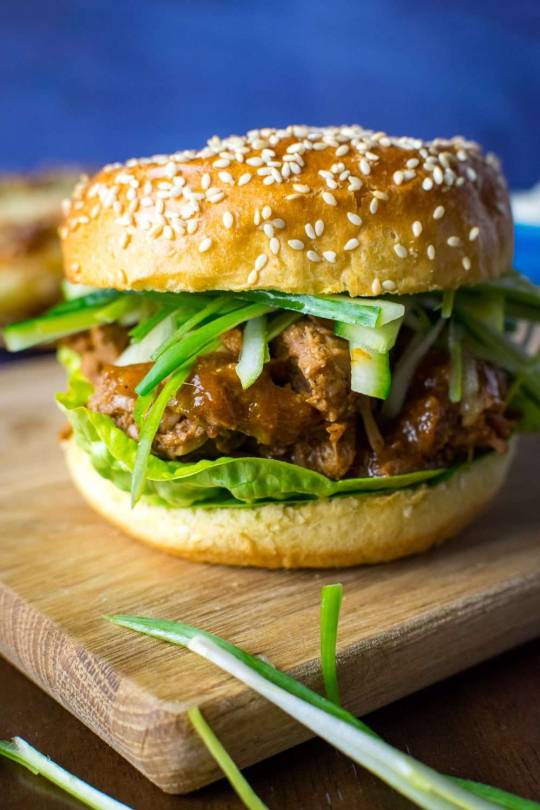
Satay Jackfruit Burger` with Sesame Fries
48 notes
·
View notes
Text
Southeast Asian Cuisine: Culinary Delights
Let’s go on a journey through Southeast Asian Cuisine, where each dish tells a story of tradition and flavor. This guide unveils the culinary treasures of Vietnam, Thailand, Indonesia, and beyond. Southeast Asia serves hundreds of culinary delights for those wanting to try new foods and experience different tastes. Exploring the diverse cuisine in Southeast Asia allows people to better understand the history and people of the region. So, if you’re considering visiting the area any time soon, there are certain dishes you certainly will want to take advantage of! Let’s jump in and look at the highlights of some of the essential dishes in the region.
A Foodie’s Journey Through Southeast Asian Cuisine
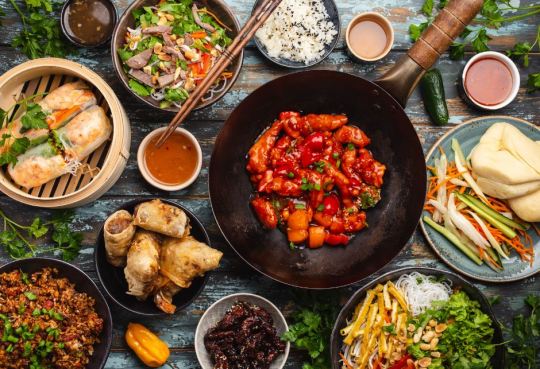
Indonesia
Indonesian cuisine is less famous than other regions like Thailand or China internationally (a situation the Economist attributes to varying factors like politics and prejudice). But there are incredible dishes using rich, flavorful ingredients and spices. An Indonesian staple is rice. It may be served steamed, slightly cooked, or wrapped in leaves. Other popular foods include soup, noodles, and dishes like Nasi Goreng and Rendang.

Rendang is a traditional Indonesian dish originating from Padang. It consists of tenderized beef marinated in coconut milk and traditional species. It certainly is a favorite among people visiting the region. Other notable mentions include satay lilit in Bali. This is a grilled minced meat dish seasoned with chili, lime, and lemongrass. Siomay, a street snack consisting of fish dumplings, sliced potatoes, cabbage, and tofu, topped with a tasty peanut sauce is also great.
The Philippines
Filipino cuisine is more like a fusion of various cultures and influences from Malay, China, and Spain. Some of the more popular choices for those visiting the region include Lechon (roast pig), a staple in Cebu. Don’t miss out on chicken inasal (a charcoal-grilled chicken dish). If you have the chance, enjoy the authentic version in Bacolod. Other tasty meals include adobo (which is marinated meat), and morcon (made from beef, poor, sausages, onions and eggs).

If you’re visiting Davao, take advantage of the opportunities to try durian. There’s also numerous varieties of durian fruit (consisting of candies, cake, flavored coffee, and more). If you are looking for a new taste sensation, the Philippines is definitely the right choice for you.
Southeast Asian Cuisine – Thailand
The history of Thai food interweaves ingredients and cooking methods from various cultures. The result is a culinary experience that attracts people from around the world. If you’re looking to participate in it, Thai street food is a perfect choice. While visiting, definitely don’t miss out on the roadside stalls where you can try out some delicious options like moo ping (grilled pork), tom yum goong (hot and sour shrimp), Khao man gai (chicken and rice), Khao niao mamuang (sticky rice), grilled skewers and Pad Thai. Head out early in the morning if you want a comforting bowl of jok, a rice porridge featuring pork topped with ginger and onions. Street food allows for a truly immersive experience for those visiting Thailand and wanting to get a unique taste of their culture.

If you want to explore Thailand, remember that each city and region features something unique. In Chiang Mai, stop and enjoy Khao Soi, a curry soup made with coconut milk served over egg noodles and topped with layered crispy fried noodles. Heading to Northeastern Thailand? Try Som Tam, a mash of tasty vegetables, Larb, and Nam Toke, and salads of meat, rice, lime, and fish sauce. Staying in the central region of Thailand? Well, many describe Bangkok as a “”food lover’s paradise, ” so don’t miss out on everything the city has to offer. If you’re heading South to the beautiful islands, try Sataw (prawns with a unique flavor), Massaman curry, or Khua Kling.
Vietnam
Southeast Asian Cuisine and Vietnam! If you’re traveling in Vietnam, you’ll encounter a range of dishes and flavors that change from North to South. Those in Sagon enjoy bánh xèo (crispy pancakes) rolled with greens and dipped in sweet-and-sour fish sauce, while Hai An Cao Lau noodles are a popular snack. Don’t miss out on the fantastic street food options like banh mi (a sandwich featuring pickled vegetables, fresh cilantro, pork belly, pork floss, and cucumber) or pho (featuring flat rice noodles with beef or chicken cooked in a hearty stock, spiced with clove, and cinnamon and anise).

Bánh Xèo, emerging from the Mekong Delta and popular in south and central Vietnam, features a batter made from coconut milk and rice. The filling contains pork, bean sprouts, and shrimp. If you still have room, try Che, a dessert sometimes served hot or cold and topped with fruits like bananas and longan. The unique combination of sauces, herbs, and spices creates a memorable experience that captures Vietnamese cuisine.
Singapore
We have to talk about Singapore if we are talking about Southeast Asian Cuisine. Singapore’s cuisine combines influences from China, Malay, and India. Some staples include Hainanese chicken rice and chili crab. Suppose you’re looking to check out some fine dining. In that case, several Michelin-star regional restaurants offer a promising taste sensation.

Laos
Laos’ amazing scenery and deep cultural legacy makes it a popular choice. The food is also worth trying out. Laotian cuisine is not as well known in the West. The dishes may seem simple, but it’s quite flavorful, frequently combining fermented pork and fish with chilies and fresh herbs (think mint, cilantro, makrut lime leaf, ginger, garlic, etc.).

Cambodia
When we talk about Southeast Asian Cuisine, we have to talk about Cambodia. The use of different herbs and spices, together with the addition of tropical fruits from the area, define the cuisine. The region’s most popular dishes include lok lak, a stir-fried beef dish; fish amok, which is fish made with banana leaves; and amok, a stew made with kroeung and fresh coconut milk. The cuisine of the area combines a variety of tastes, from spicy to sweet, to produce a flavor profile that is sure to please. You might want to try kangkep baob if you’re feeling more daring. It’s a frog that’s been roasted over hot coals packed with peanuts, chiles, pork, and different spices like garlic and lemongrass.

Southeast Asian Cuisine: A Feast for Foodies
Southeast Asian Cuisine is delicious. Whether you want to visit the numerous street vendors or immerse yourself in an exciting culinary experience by visiting a more upscale restaurant, you will be very content with Southeast Asian food. There are an infinite variety of flavors and dishes worth exploring. Hopefully, this article has pointed you toward some of the more popular ones you wouldn’t wouldn’t-would want to take advantage of. Also, please check my other article on Discovering the Wonders of Southeast Asia Travel: A Comprehensive Travel Guide.
And as always, don’t forget to follow to be in the loop. 👍
#travel and tourism#travel guide#travel blog#travel diary#places to explore#travel goals#travel destinations#southeast asia#southeastasia#southeast asia travel#southeast asian food#southeast asian cuisine#philippines#thailand travel guide#thailand#phuket#asia#vacations#thailand tourism#vietnam#travel#places to visit#malaysia#indonesia#bali#in view adventures#laos#cambodia#asian food#lechon
2 notes
·
View notes
Text
Menu Three
Menu three from Rowan Bishop and Sue Carruthers' "The Vegetarian Adventure Cookbook"
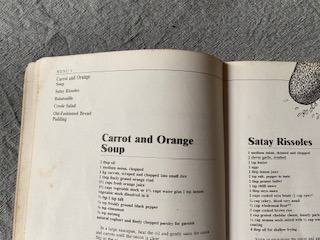
Stats:
Dinner Party Guests: 2
Injuries: 1 minor
Thoughts: Various
Instagram Features: ½ (own)
Menu Three:
Carrot and Orange Soup: Carrot, onion, garlic, orange juice, orange rind, vegetable stock, nutmeg, cinnamon, salt and pepper.
Satay Rissoles: Brown rice, peanut butter, edamame, eggs, butter, lemon juice,chilli sauce, onion, garlic, soy sauce, celery, tasty cheddar cheese, wholemeal flour, sesame seeds, salt and pepper.
Ratatouille: Onion, garlic, tomato, zucchini, capsicum, eggplant, italian herbs, salt and pepper.
Creole Salad: Apple, pear, pineapple, lemon juice, natural yoghurt, honey, lettuce, shredded coconut.
Plagued by chronic fatigue but determined to get my life back in order following menu two, I decided to be nonchalant about menu three. It was the first four page spread of Bishop and Carruthers’ cookbook, but I refused to engage at full capacity. This week made me think about labour, the household and emotional labour that I put in on top of my full time job. Clocking into emotional labour, I spent two days in bed on Monday and Tuesday. I wondered about the way I allocated time, did cooking these menus fall into leisure time or was it household labour? I wondered what Bishop and Carruthers did during the day, did they also do things to trigger turmoil in an ordinary life?
On Tuesday evening I rose from convalescence only to drive to a fruit store in my area and spent the evening chopping vegetables. I cooked the brown rice too that night, thinking it could be better for the mixture if it aged a little in the fridge overnight. That was the extent to which I prepared for the menu. Four hours later and lying in bed I remembered I had left the brown rice on the bench, rendering it unsafe. On Wednesday, after a positive first day back in the office, I stopped at the supermarket for the last few ingredients I had forgotten and a bottle of sauvignon blanc to keep myself nonchalant for the next two hours. I had announced to my two guests that dinner would be on the table at 8:30pm and had written myself a comprehensive list of the order the cooking would take that day in my work diary.


Chopped celery/salary
Leisure time mixed with household labour turned into hard labour in my kitchen that Wednesday night as I attempted to make four dishes in two hours. I spent time dressing the table at the very beginning. I’d bought napkins with the Eiffel tower on them, and placed dried flowers a past flatmate had picked about seven months ago in the middle of the table. The Carrot and Orange Soup, I didn’t boil long enough, the carrots weren’t soft when I put the soup into the blender, or else the orange juice was too pulpy, the blender blended until I smelt burning. The Rissoles came together nicely, I was skeptical considering what had happened to the rice cakes the week before. I had used an extra egg this time, in case it was true that eggs in the 1980s were different.


Je ne sais Rissoles
The dinner party ate about 45 minutes after I had said that we would. The Carrot and Orange Soup, presented and served, was inedible due to a gritty texture. The Rissoles were flavourless though edible. The Ratatouille was edible though I received complaints that the eggplant hadn’t cooked, no fault of my own as I had followed Bishop and Carruthers’ instructions line for line, minute for minute. The final element of the menu was the Creole Salad. Highly discussed but had little takers and no place in the menu perhaps.
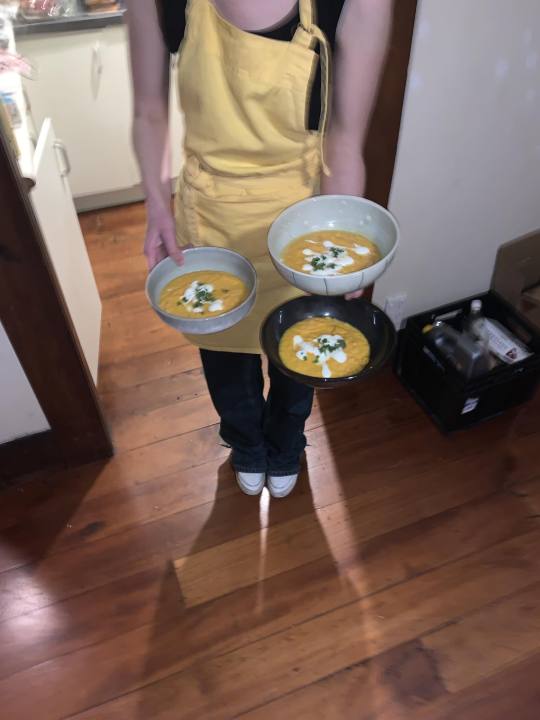

Burnt hand serving hot bowls of soup, Creole Salad pictured in the largest bowl
Menu three felt like a return to order, as I had predicted. Following Menu two there was a stark need to detach from the internalisation of this journey toward self-discovery and reconnect with the material element for Menu three. I posted a photo of myself cooking to my Instagram story.
#home cooking#foodblogger#recipes#cooking#food#vegetarian#girlblogging#it girl#france#foodpics#self discovery#self awareness
2 notes
·
View notes
Text

Pork satay with a ground peanut satay sauce on a bed of mixed grilled summer vegetable couscous alongside a Thai style sour cucumber salad
24 notes
·
View notes
Text
What are your guyses fave fruits/veg?
For me sometimes I go off things for ages like right now I can’t even think about eating a banana.
Apples are pretty constant for me - love an apple.
Red grapes.
Vegetables I mainly like sweet corn and small tomatoes I used to LOVE cucumber but again I’ve gone off it at the moment.
One of my fave meals used to be like baby corn and sugar snap peas in a satay style sauce.
2 notes
·
View notes
Text
Cork City Libraries Sustainability Blog | Sow…Let’s Grow!

I was fortunate enough to attend a gardening course at the end of June, with the intention that it would contribute to my work with the Hollyhill Seed Library and this blog. Although the day itself was wet and miserable, and the arrival of the promised sandwiches never materialised, I thoroughly enjoyed myself and my head was spinning with the amount of information that was being imparted upon us. The lady who was running the course, Aoife Munn, was a fountain of knowledge and I would highly recommend checking out one of her talks if she ever pops up in your area.
She initially spoke about the importance of pollinator plants. In a study conducted by the Botanical Society of Britain and Ireland it was found that our native plants have declined by 56% since the 1950s which is a terrifying statistic. Plants have evolved over millions of years to adapt to their surroundings, including their ability to attract pollinators specific to that area. Given that we have lost over half of our native plants it’s not a big jump to assume that our native bees and other pollinators must be really struggling in the changing landscape. Something we can do as gardeners to alleviate that struggle is to plant native pollinators. Sometimes you don’t even have to plant anything, if you just let a patch of land grow wild you will be amazed at what will grow there.

Plants such as dandelions, oxeye daisy, clover and knapweed will all appear in your garden given the space and the time. Foxglove, primrose, cornflowers, and marsh marigold are all native Irish plants and great pollinators too, so it’s a double win! A plant that she also suggested that I’d never considered before was the humble ivy. Ivy keeps its foliage all year round, it flowers when very little else does and its berries are a wonderful food for birds during the chilly winter months. Other fantastic pollinators include snowdrop, crocus, comfrey, wallflower, hellebores, and alliums.
Aoife also showed us how to make biodegradable pots for seedlings or for plants that need an extra bit of support indoors before they can be planted out. To make your own pot all you need is a couple of sheets of newspaper and a plastic bottle, a 250ml bottle is a perfect size. Fold the newspaper sheet in half horizontally, with the closed end towards you and the open end facing away. Put the plastic bottle at the start of the newspaper, making sure the open end is also facing the open end of the newspaper and roll the newspaper around the bottle. Stuff the paper into the opening of the bottle and then take the bottle out and put it back in, bottom end first so it can squash down the newspaper. This will degrade much faster than a toilet roll tube and repurposes items that would traditionally have ended up in the bin.

In other gardening news I ate my first radish this week and it was one that I had grown myself! I borrowed the seeds from the Hollyhill Seed Library, planted the seeds in the bottom of the pot that my peas were in and hey presto, a couple of weeks later I have lots of lovely crunchy little radishes. Another vegetable that is ready to eat is rainbow chard. Although not fully grown yet, the baby leaves are perfectly edible and pinching them out now gives the remaining leaves space to grow. Using my baby rainbow chard leaves and the radish I grew, I made a lovely peanut satay and it’s safe to say that nothing beats the taste of freshly grown veg!
2 notes
·
View notes
Text

Despite being more flavorful and versatile, chicken thighs remain far behind breast meat in popularity, at least within the US. Here at Serious Eats, though, we recommend chicken thighs for all sorts of preparations: braising, stewing, baking, frying, skewering/grilling. An abundance of connective tissue makes them both flavorful and forgiving of longer cooking times, unlike breast, which tends to dry out quickly.
To me, all that makes thighs the perfect cut for a relaxed night of cooking, one in which I don't have to watch the pan like a hawk to get good results. Here are 21 recipes, from one-pan braised dinners of chicken thighs and vegetables to Bengali rice porridge and grilled paella, to convince you of the glories of dark meat.
Grilled Chicken Skewers
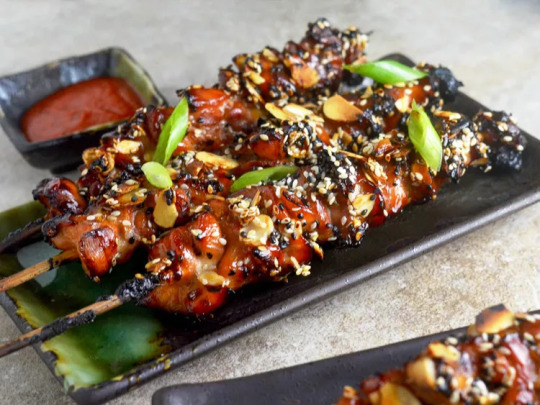
Crispy Caramel Chicken Skewers
Morgan Eisenberg
Chicken thighs' higher fat content helps them retain more moisture than breast. That means thigh meat is practically a must for grilled skewers, as the intense heat of the grill would quickly overcook and dry out breast. Inspired by Vietnamese gà kho, these skewers get ample flavor from a sweet-and-savory glaze (incorporating both brown sugar and honey as a stand-in for the more traditional rock sugar) that caramelizes into a crispy coating on the grill. Rolling the skewers in a final layer of sesame seeds and sliced almonds gives them plenty of crunch. You can grill these (or any of the other skewers below) on the grate using a two-zone fire, as we've recommended in the past, or try our new and improved skewer-grilling setup to bring the meat closer to the coals and increase your chances of tender, juicy results.
Sweet-and-Sour Grilled Chicken Skewers (Yakitori Nanbansu)
Vicky Wasik
The nanbansu in the name is a simple mixture of soy sauce, vinegar, sugar, and mirin, and it can be used as a sauce, dip, and/or marinade. Again, use chicken thighs here to ensure the yakitori come off the grill moist and tender. The meat picks up lots of flavor from an overnight marinade in the nanbansu, which we also serve alongside the skewers for dipping; a little optional shichimi togarashi will add a mild heat, if you want it.
Japanese Chicken Skewers With Scallion (Negima Yakitori)
J. Kenji López-Alt
Once you have a batch of homemade teriyaki sauce on hand, this recipe could hardly be easier. The teriyaki sauce gives the skewers a sweet-and-savory profile, while the grilled scallions' crunch helps balance the juiciness of the chicken thigh. As with any skewer recipe, thread the pieces fairly close together on each skewer to help them retain moisture—and, of course, don't skimp on the sauce.
Thai-Style Chicken Satay With Peanut-Tamarind Sauce
J. Kenji López-Alt
There are many good reasons to own a mortar and pestle, but my personal favorite may be that it affords you the opportunity to just bash a lot of things into tiny pieces. You'll get to do plenty of that for this Thai-style chicken satay, which starts with a powerful aromatic paste featuring lemongrass, turmeric, garlic, ginger, and toasted coriander and white pepper. We combine the paste with coconut milk and fish sauce to form a marinade for small pieces of chicken thigh meat before they're skewered and grilled. The tart-sweet flavor of tamarind in the accompanying peanut dipping sauce makes it a perfect complement to the skewers' smoky char.
Grilled Tarragon-Mustard Chicken Skewers
Morgan Eisenberg
Lemon and mustard are both powerful acids, which help to tenderize chicken, and they work so quickly that their flavors can penetrate the meat in just an hour of marination time. The sweetness of honey and acidity of the lemon juice and mustard help balance out the strong anise-y flavor of tarragon here. This quick recipe is a good argument all on its own for introducing more weeknight grilling into your life.
Main Dishes
Easy Pressure Cooker Green Chili With Chicken
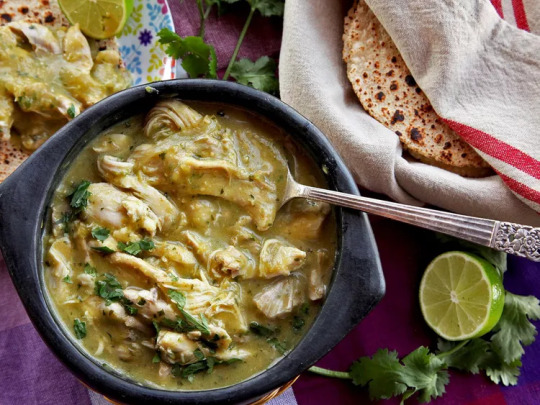
J. Kenji López-Alt
Chicken thighs take well to braising and other moist cooking methods, such as in this chile verde, which also gets a flavor boost from using dark meat. Plus, with the power of a pressure cooker at your disposal, you'll achieve results in 30 minutes that would normally take hours on the stovetop. A combination of tomatillos, Poblano peppers, Anaheims, and serranos yields a complexly flavored sauce, and a small amount of fish sauce gives the chili an extra hit of umami once it's finished.
Crispy Braised Chicken Thighs With Cabbage and Bacon
J. Kenji López-Alt
Cabbage and pork are a classic combination, and in this easy, hearty one-pan braise, we pair both with chicken thighs to great effect. By cooking the chicken thighs and bacon directly on top of a bed of shredded cabbage, we ensure the vegetables absorb flavor from both meats. The clincher? The whole dish takes just over an hour, start to finish.
Grilled Chicken and Pork Paella
Vicky Wasik
The key to nailing a proper paella is browning every single ingredient very well before adding any liquid. Since the chicken is going to be first browned and then cooked in stock and puréed tomatoes, it needs to be able to hold up to an extended cooking time, which means thigh meat is what you want here. For a party-sized paella like this one, emulate traditional methods and make it outside on the grill—it's the best way to ensure such a large volume heats evenly. If you're not a paella purist, check out our paella mixta, too, which incorporates both chicken leg meat and seafood.
Kimchi-Brined Fried Chicken Sandwich
Vicky Wasik
Fans of Kenji's five-ingredient pickle-brined fried chicken sandwich, or any fried chicken sandwich, won't want to miss out on this twist. We marinate chicken thighs in a mixture of kimchi brine, buttermilk, and gochugaru (Korean red chili flakes) before dredging and frying, then top the fried chicken with chopped kimchi and kimchi-infused mayo. (For extra credit, try serving it on Stella's flaky Black Sesame Buttermilk Biscuits.) Safe to say, I'll be dreaming about this sandwich for a few months at least.
Vietnamese-Style Baked Chicken
Emily and Matt Clifton
Another easy weeknight dinner, this one-pan recipe for baked chicken thighs relies heavily on a flavorful marinade full of Vietnamese flavors—bright, umami, and just a little spicy. It's certainly worth the few items you'll have to add to your grocery list. Here's a tip: Make sure you prepare your rice (because you're going to need plenty of rice on the side!) while the chicken is marinating.
Oyakodon (Japanese Chicken and Egg Rice Bowl)
J. Kenji López-Alt
Oyakodon, a rice bowl topped with simmered chicken and softly cooked eggs, is pure Japanese comfort food, and easy to make at home. The extra egg yolk on top is optional, but we love any chance to pop open a golden yolk, swirling it around and around in the bowl so its richness gets into every corner.
Chicken Scarpariello (Braised Chicken With Sausage and Peppers)
J. Kenji López-Alt
Chicken scarpariello is an old Italian-American standby of braised chicken thighs, sausage, and peppers in a punchy sweet-and-sour sauce, and it's simple enough to make any night of the week. Achieving the most possible flavor in the sauce depends heavily on the drippings from the chicken, so it's best to use bone-in, skin-on thighs. We sear those thighs until they're deeply browned before adding them to a pan with sautéed garlic, onion, and bell pepper; browned sausage; and pickled cherry peppers along with their liquid, before popping it all in the oven to braise.
One-Pan Chicken, Sausage, and Brussels Sprouts
Emily and Matt Clifton
It's hard to think of a culinary image makeover that's been more dramatic than that of Brussels sprouts—the days of their reputation as mushy, sulfur-scented lumps are over. That's thanks in large part to the realization that intensely high heat is the key to getting them crisp, nutty-sweet, and delicious. This recipe roasts halved Brussels sprouts, sliced sausage, and bone-in chicken thighs all in one pan, where (just as in some of the previous recipes) the meat gets tender and well browned, and the sprouts' flavor benefits from mingling with all those juices.
Creole-Style Red Jambalaya With Chicken, Sausage, and Shrimp

Vicky Wasik
Building layers of flavor in a jambalaya is just as important as it is for a soup. In this recipe, the chicken and sausage join forces to flavor the stock. Once the chicken has been browned, it goes into the oven along with the rice, aromatics, and braising liquid—cooking in the oven is our secret to avoiding burnt rice and the need for frequent stirring—so the forgiving nature of chicken thighs is a must here.
Chicken Massaman Curry With Wheat Beer and Potatoes
Emily and Matt Clifton
If you're put off by overly spicy curries that leave you in tears, give massaman curry a whirl—a product of Middle Eastern migration to Southeast Asia, it uses milder spices that build warmth and aroma rather than fire. Boneless and skinless thighs work fine here, especially since they're easily cut into small pieces. We simmer them, along with potatoes, in a coconut milk– and chicken stock–based sauce, plus a surprise ingredient—Belgian-style wheat beer.
Coconut- and Ají Amarillo–Braised Chicken
Vicky Wasik
While you can technically highlight any chili pepper of your choosing for these braised chicken thighs, the recipe is especially well suited to ají amarillo, a bright and fruity orange pepper that's native to Peru. The mellow, sweet coconut milk takes on the golden color of the ají amarillo quite nicely, making this dish perfect for a day when you'd like a little more sun.
Grilled Tandoori Chicken Patties With Jalapeño-Mint Yogurt Sauce
Morgan Eisenberg
Blending the ground chicken here with a yogurt marinade, along with the thigh meat's natural ability to retain moisture, helps ensure these patties come out juicy after grilling. An array of spices creates a warm, Indian-inspired profile, balanced out by the cooling jalapeño-mint yogurt sauce dolloped on top. Serve these on toasted flatbread for an easy, handheld summer dinner.
Broiled Tandoori-Style Chicken With Almonds and Couscous
Vicky Wasik
Broiling is another high-heat cooking method in which chicken thighs can shine—a broiler may not be as powerful as a tandoor, but it's about as close as you're going to get with standard indoor home equipment. We tenderize the chicken in a mix of yogurt and spices, then broil it, along with the marinade, in a skillet until it's nicely browned. The liquid from the skillet does double duty, adding flavor to a side dish of fluffy couscous.
Chicken Thighs With Saffron, Lemon, and Red Potatoes
Yasmin Fahr
Coming together in a single pan in just an hour, this recipe is great for whipping up on a Tuesday night after a tiring day of work. Searing the chicken thighs first delivers crispy skin and adds extra flavor to the braising liquid, while a pinch of saffron turns the dish delightfully golden and fragrant. After the sear, we add chicken stock, quartered red potatoes, saffron, lemon juice, and black peppercorns, then stick the skillet in the oven—that's it.
Korean-Style Fire Chicken (Buldak) With Cheese
Vicky Wasik
Using stronger-flavored dark-meat chicken in this hot, spicy, and gooey dish just makes sense—the chicken has a lot of other flavors to compete with, including fresh red chilies, gochugaru, gochujang (Korean chili paste), ginger, black pepper, and more. While the cheese broiled over the top might seem like gilding the lily, it's not true buldak without it. Crack open a beer, get ready to sweat, and embrace the overkill.
Bengali Rice Porridge With Lentils and Chicken
Vicky Wasik
This porridge is pure comfort food, perfect for those days when you feel a cold coming on or when it's gray and rainy out. Gently crushing some of the rice leaves smaller bits that dissolve into the turmeric- and ginger-scented porridge, making it nicely thick, and diced chicken thigh, potato, and red lentils turn it into a hearty, warming meal. But the best part, in my opinion, is the topping of crispy fried shallots, since I'm constantly looking for excuses to make more and sprinkle them over everything. That counts as meal prep, right?
3 notes
·
View notes